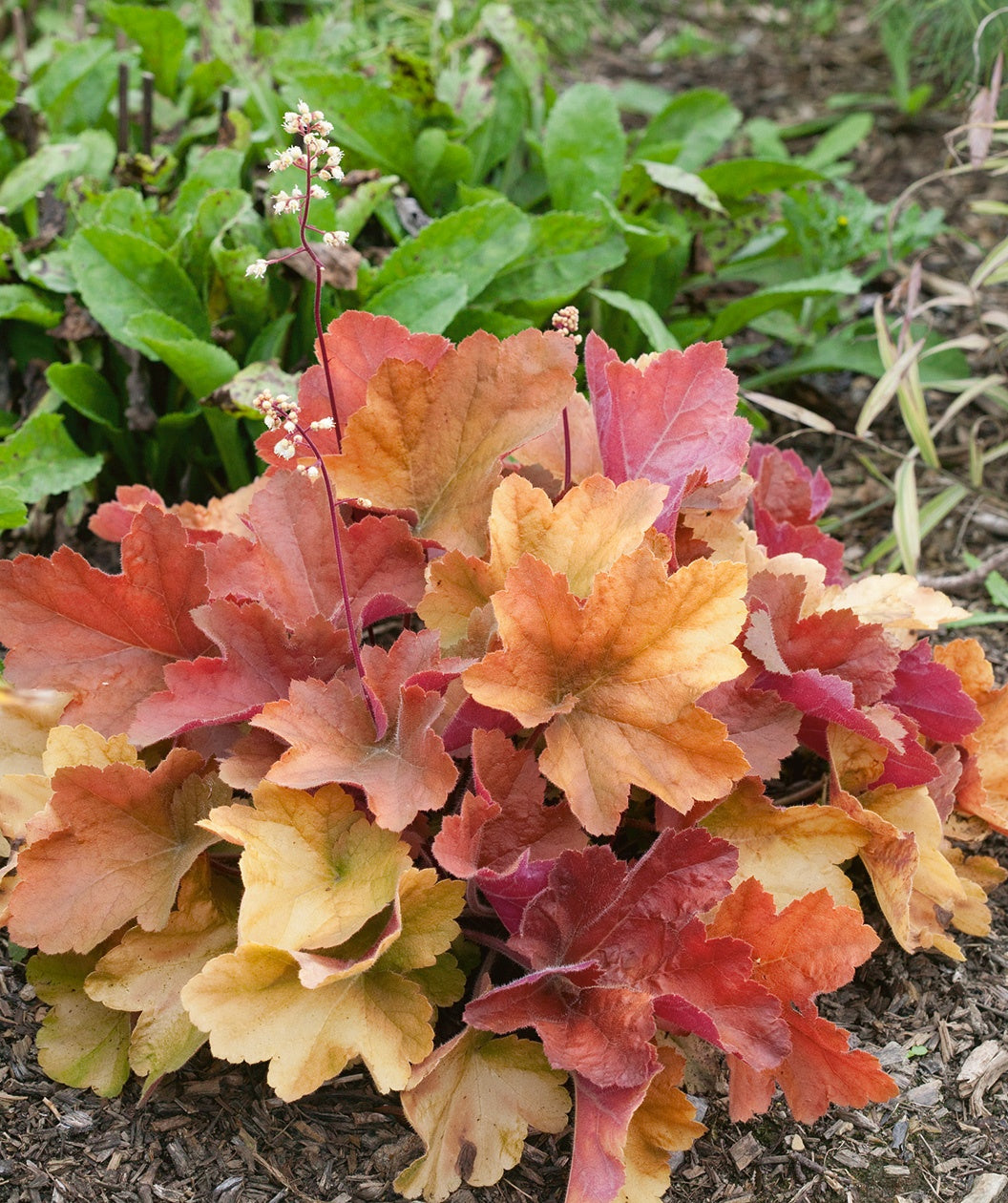

YEAR-ROUND PEACH COLORED FLIRTY LEAVES
FEATURES:
- Bright orange foliage in the spring
- In the summer, foliage turns to yellow, orange, and peach colored leaves
- White flowers will stick around through summer and the first frost
- Will attract lots of butterflies
- Heat and humidity tolerant
- Semi-evergreen in warm winters
- Hand Selected, Fresh from the Grower
- Ships in a plant-safe designed box
Growth Facts
- Hardiness Zone: 4-9
- Mature Height: 1-2' tall
- Mature Width: 1.5-2' wide
- Exposure: Full Sun/Part Shade
- Spacing: 1.5-2' apart
YEAR-ROUND PEACH COLORED FLIRTY LEAVES
FEATURES:
- Bright orange foliage in the spring
- In the summer, foliage turns to yellow, orange, and peach colored leaves
- White flowers will stick around through summer and the first frost
- Will attract lots of butterflies
- Heat and humidity tolerant
- Semi-evergreen in warm winters
- Hand Selected, Fresh from the Grower
- Ships in a plant-safe designed box
Growth Facts
- Hardiness Zone: 4-9
- Mature Height: 1-2' tall
- Mature Width: 1.5-2' wide
- Exposure: Full Sun/Part Shade
- Spacing: 1.5-2' apart
Why plant Southern Comfort Coral Bells?
Intoxicating! Southern Comfort is one of the most dazzling Coral Bells you can buy. You’ll want to plant it in your highest-visibility landscape bed, so you’ll see it every day. You’ll enjoy watching it transform itself through the seasons. In spring, its new foliage emerges a warm, rosy-peach color, eventually taking on more of a caramel hue, and finally, amber. In summer, the leaves expand to their full size—extra-large and extra-impressive for Coral Bells! In fall, the foliage color deepens to a rich burgundy and holds through the winter. With Southern Comfort, the party goes all year long!
Coral Bells are native Spirits that grow all over North America in different forms. Up until the 1990s, gardeners considered them to be nice garden plants, but nothing too spectacular. Then breeders began to make crosses, and exciting new Coral Bells in brilliant colors began to appear. The charge was led by talented plantsman Dan Heims of Terra Nova Nurseries in Canby, Oregon. Heims and his team developed this selection, too. The Terra Nova crew produced Southern Comfort by crossing Sparkling Burgundy Coral Bells with an eastern species most commonly called “Hairy Alumroot.” They released the new selection in 2008.
How to use Southern Comfort Coral Bells in the landscape?
Flowers, too! Southern Comfort Coral Bells is grown primarily for its captivating, rosy-peach foliage, but its blooms are a nice bonus. In late summer, tiny, airy white blossoms rise on slim stems, making a lovely accompaniment to the apricot leaves. These plants work perfectly as the specimen plant in your garden or uses its colorful dimension to be the best low maintenance ground-cover. Southern Comfort Bells are versatile with their ability to thrive in the ground, containers, or window boxes!
Planting Zones
Hardiness Zone: 4-9
How To Plant Southern Comfort Coral Bells
Most Coral Bells do best in morning sun, with shade during the hottest part of the day. Bright light will bring out the richest coloring in their foliage, but intense sun can scorch some varieties. Plant Southern Comfort in rich, organic, well-drained soil that is moist but never soggy. Trim off spent flower spikes if you find them unattractive. Southern Comfort is evergreen; clean up any winter-damaged foliage in early spring. Black vine weevils can be a problem in some areas. You can control them organically with beneficial nematodes if this is the case, or simply keep your Coral Bells in containers.
How To Water
Water as soon as they arrive! Coral Bells need to be watered regularly to maintain evenly moist soil for proper establishment in the landscape.
How To Fertilize
When fertilizing the Southern Comfort Coral Bells, apply a balanced slow-release granular fertilizer in the springtime. Fertilizing this plant is not required but if you'd like to give your plant a growth jumpstart then we recommend using out Elements Starter Plant Food!
How To Prune
Remove the stems of any faded flowers in the late fall to pave the way for new healthy growth. It is not hard to keep this beauty looking beautiful!




